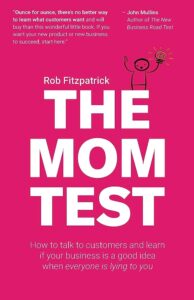What Do Investors Look For In SaaS Startups?
Whether you’re working towards getting your first 100 customers or growing your startup to a million-dollar business, getting a great investor onboard can be a crucial step if you’re looking to rapidly scale your business. Investors look for a wide range of factors when evaluating SaaS businesses, including market size, the competitive landscape, team experience, and growth potential. In this post, we’ll take a closer look at what investors look for in SaaS startups, and provide some tips on how to position your company to get an investment.
Why Should I Look To Secure An Investment For My SaaS Company?
While not all startups should secure an investment, it can be a crucial step if you’re looking to grow your company to more than a lifestyle business. SaaS startups often require a significant upfront investment in order to develop their products. Investors can provide the necessary capital to cover these initial costs and allow the startup to focus on product development and market entry rather than counting coins. Without investment, some SaaS startups may struggle to get off the ground, as they may not have the necessary resources and skills to compete with established competitors without outside help.
A good investment can also help SaaS startups to scale more quickly. As a business grows, it can require extra capital to expand the team, invest in marketing, and develop new features. Having a steady stream of investment can allow the startup to accelerate its growth at a quicker rate than it could solely on its own revenue.
The investors themselves can also provide valuable strategic advice and connections, which can allow the company to grow even quicker and gain access to more potential customers. This support can be invaluable for SaaS startups, particularly in the early stages when they are still building their brand and reputation.
Investment can also increase the overall valuation of the company. As a startup grows, investors may be willing to invest additional capital at a higher valuation allowing founders to retain more equity in the company. A higher valuation can also make the company more attractive to potential acquirers, which could provide an excellent exit opportunity for the founders and investors in the future.
Should I Look To Secure An Investment?
There’s no one-size-fits-all answer to whether you should look to secure an investment for your startup. Each business is unique, and the decision to secure an investment should be based on a variety of factors, including the business model, market size, competitive landscape, growth potential and where you want to take your business.
In general, if you’re looking to create a startup as a lifestyle business, to support your living expenses and to free you from your 9-5, then often investment won’t be for you. Taking on an investment requires diluting your ownership of your business, reducing your earnings from the business and adding pressure to meet both your and your investor’s requirements for the product. If you’re not sure whether gaining investment is for you, have a look at the other ways in which you can gain funding for your product.
That being said, startups that are developing a new product that is set to disrupt the industry can secure incredible investment opportunities. These types of startups often require significant upfront investment to develop the technology and bring their product to market, and investors may see the potential for high returns if the technology proves to be successful.
Similarly, startups that are operating in a large and growing market may also be more attractive to investors as a large market size can indicate the potential for significant revenue.
What Do Investors Look For In SaaS Startups?

1. Clear Ideal Customer Profile (ICP)
Understanding your target audience is crucial for effective product development and efficient sales. Companies that possess a clear understanding of their target customers have a higher likelihood of success.
Investors seek a well-defined Ideal Customer Profile (ICP) before investing in a business. Therefore, entrepreneurs should establish their ICP through comprehensive “Voice of Customer” research and valuable insights. Additionally, leveraging past experiences can contribute to building a solid customer base.
The benefits of having a clear ICP include:
- Precisely targeted go-to-market (GTM) strategies.
- Focused product roadmap.
- Shorter sales cycles and compelling value propositions.
2. AI-powered SaaS Applications
Artificial intelligence plays a significant role in advancing modern software, enabling automation for consumers. AI-powered Software as a Service (SaaS) applications can leverage vast datasets and customer-specific data to automate tasks and facilitate informed business decisions. This unique standpoint can attract investors.
Noteworthy SaaS companies developing AI-powered applications include:
- Yalochat: A conversational AI-powered platform facilitating efficient communication between businesses and customers.
- Zeni: An AI application offering bookkeeping, financial reporting, and invoicing services.
3. Product-led Growth Strategies
Product-led growth (PLG) strategies are critical for building successful SaaS companies. These strategies allow consumers to test the product firsthand, exploring its value without limitations.
Implementing PLG not only helps businesses create consumer-friendly products but also leads to lucrative returns. This strategy has become essential across enterprises, increasing the chances of attracting investor interest.
The PLG strategy capitalizes on trends such as:
- Reduced sales cycles and faster buying decisions.
- Easy deployment (cloud-based features).
- Seamless purchasing (quick transactions).
- Intuitive onboarding and adoption.
4. MRR (Monthly Recurring Revenue)
Monthly Recurring Revenue (MRR) is a leading indicator of revenue growth and a well-regarded metric for evaluating SaaS businesses. Investors often consider MRR more than Annual Recurring Revenue (ARR) because it provides insights into churn.
SaaS companies with high MRR can secure significant investments during seed funding rounds. If small businesses or brands experience rapid growth and meet investment criteria, they can be valued using MRR. The criteria typically include:
- Annual Recurring Revenue (ARR) exceeding $2 million.
- Year-over-year growth rate of 50% or higher.
- Founders’ involvement not essential for business survival.
5. Customer Acquisition Cost (CAC)
Customer Acquisition Cost (CAC) is a vital metric for assessing marketing and sales expenses and measuring the effectiveness of your SaaS business’s customer acquisition strategy.
It represents the average cost incurred to acquire new customers and indicates the return on investments in sales and marketing. CAC is a meaningful metric for potential investors, allowing them to evaluate the scalability of your SaaS product or business.
6. Churn Rate
The churn rate reflects the long-term trajectory of a SaaS business. A low churn rate improves recurring revenue, growth rate, and mitigates the risk of long-term value loss.
Smaller companies often have higher churn rates due to less sophisticated needs and lower demand. High churn rates deter investors from investing in a SaaS company as they indicate a loss of potential customers and inadequate retention rates. Therefore, it is crucial for SaaS business owners to address churn rate as a fundamental metric.
Retaining existing customers is more cost-effective than acquiring new ones. Focusing on customer retention enhances scalability and performance.
7. EBITDA (Earnings Before Interest, Taxes, Depreciation, and Amortization)
EBITDA represents earnings before interest, taxes, depreciation, and amortization. SaaS businesses generating annual revenues of $5 million or more often employ EBITDA.
It is a substantial measure of core profit trends, offering an accurate comparison between companies with different capital investments, tax profiles, and debt. By eliminating extraneous factors, EBITDA highlights returns and facilitates a solid infrastructure, fostering accelerated growth in your SaaS business and making it an attractive investment opportunity.
How Do I Make My Startup More Appealing To Investors?

Rapid Feature Development
To demonstrate your commitment to becoming the next big thing in your industry and gaining an investor’s attention, it’s essential to continuously be developing your product’s features, marketing strategies, and overall business operations. This rapid development will show potential investors that you’re taking your business seriously and are dedicated to disrupting your niche.
Work On The Right Problems
While it’s important to show that you’re quickly iterating on your product and looking to improve it, it’s important to make sure that you’re working on the right things. Investors want to see that your company is able to focus on the right tasks to help to progress your business and increase profits over the long term. If you’re looking to make sure you’re covering every base when working on your startup, check out our checklist to ensure a successful launch.
Make Sure Your Product Works
A product that works well shows an investor that the startup has developed a solution that effectively addresses a specific problem of its target market. This is important because customers are more likely to adopt a product that solves their problems and works as they would like it to. A product that works well and is intuitive to use also demonstrates that the startup has the technical expertise to develop a high-quality product that can scale, which increases investor confidence.
Improve Your MRR
Monthly Recurring Revenue (MRR) is an important metric for investors as it provides insights into the financial health of the business they are looking to invest into. MRR is the amount of revenue that a company generates from its products on a monthly basis. It’s often used as a key performance indicator (KPI) in the SaaS industry, as investors use it to compare different companies in the same market. Comparing MRR across companies can help investors to identify which companies are growing faster and have more potential for future growth in the same market.
Do Some Networking
Investors are always looking for opportunities to maximise their return on investment (ROI), and a startup that has a strong network within its niche can show great potential for monetary returns. A strong network can provide your startup with access to key resources, potential customers, and partnerships. This can allow you to tap into valuable industry knowledge and expertise, which can help you to navigate complex markets and develop a more appealing service to your customers. This can increase your business’s odds of making a profit which makes your startup look much more appealing to an investor.
Have a Highly Successful Sales Pipeline
Investors are interested in whether your startup’s sales pipeline is effective as it directly impacts your ability to find and progress leads and get more customers. A sales pipeline is a process for identifying and converting leads into paying customers. A well-designed sales pipeline can help a startup increase its conversion rate and shorten the sales cycle, which can lead to more revenue and faster growth. An effective sales pipeline also helps a startup identify areas for improvement in the sales process, which can lead to continuous optimization and refinement over time.
Check out our article on creating a successful sales pipeline if your business currently doesn’t have one, or have a look at our guide to optimising your sales pipeline to help your product to be more appealing to investors.
Reduce Your Churn
Churn refers to the percentage of customers that stop using a company’s product during a specific period of time. Investors generally avoid companies with high churn rates as it seriously impacts a company’s revenue and growth potential. High churn rates can make it difficult for a company to achieve sustainable growth because they are losing customers at a faster rate than they are acquiring new ones.
High churn rates can also show that a product isn’t meeting its target audience’s needs or that a company isn’t engaging well with their clients. Both of these symptoms can be incredibly concerning, which is why it’s important to try to curb any churn before applying for investments.
If you’re looking to reduce your company’s churn, there are several strategies that you can use including: improving customer support, offering rewards for loyal customers, and providing a superior user experience. Additionally, you can request regular customer feedback to identify and address areas where your customers aren’t satisfied.
Diversify Your Skillset

Investors look for founders with diverse skill sets when looking to invest in a business as it increases the likelihood of their investment paying off. A diverse skill set means that the founder can bring a broad range of knowledge and experience to the business, which means that the startup is more likely to target the correct opportunities and mitigate risks. This can be especially important in the early stages of a startup when resources are limited, and the potential impacts of making a single mistake are a lot higher.
A founder with diverse skills also gives an investor more confidence that the business will be able to adapt to a change in market conditions. Early SaaS startups often face unexpected challenges when growing which requires an experienced founder with a large skillset to help direct the company in the correct direction.
Have A Clearly Defined Market
A clearly defined and sizable market helps an investor to have more confidence in a startup as it shows that there is a specific problem the product is addressing that will help many people. This increases the chances of success of the business and so reduces the monetary risk that an investor has. Check out this blog post if you’d like help understanding your market and creating a marketing plan.
Ensure Your Business Can Become Incredibly Profitable
At the end of the day, investors are most interested in seeing the profits from your business so that they can see a healthy ROI. You need to make sure that your business is both serving a market that can provide a lot of money for your product as well as making sure that your idea will actually bring in the money.
What’s the Easiest Way To Impress An Investor?
The above list shows a lot of different things that you need to focus on in order to secure a good investment. However, if you’ve got a few things to work on and your business needs investment more quickly, you should primarily focus on improving your MRR.
MRR is one of the most crucial metrics for investors as it provides a clear indication of a company’s growth and potential sustainability. It shows an investor the:
- Predictability of Revenue: MRR gives an insight into the future revenue of a company which allows investors to accurately forecast the revenue of a company.
- Growth Potential: The growth rate of a company’s MRR provides a clear indication of its growth potential. A strong growth rate indicates that a company is gaining more customers, which translates into less investment risk and a higher valuation for the company.
- Customer Retention: MRR also reflects a company’s ability to retain its customers. If a company has a high MRR, it means that customers are satisfied with the product and are unlikely to churn, improving the likelihood of long-term growth.
How Can I Value My Company?
There are three approaches to consider when valuing SaaS businesses:
- Seller Discretionary Earnings (SDE): SDE involves assessing the earnings generated by the seller, taking into account discretionary expenses. The valuation is based on setting the annual profit against a multiple, typically ranging from 2-10 times.
- Earnings Before Interest, Taxes, Depreciation, and Amortization (EBITDA): EBITDA focuses on the earnings generated before considering interest, taxes, depreciation, and amortization. Similar to SDE, the valuation is determined by setting the annual profit against an annual multiple, falling within the range of 2-10 times.
- Monthly Recurring Revenue (MRR): MRR valuation involves setting the monthly revenue against a multiple. This approach typically ranges from 25-100 times the monthly revenue.
The choice of valuation formula depends on the annual revenue generated by your SaaS business. Each formula provides a different perspective, and the appropriate one will depend on the specific circumstances and industry norms.
Best Valuation Metric For Small Companies (<$5 million)
For small companies, the Seller Discretionary Earnings (SDE) metric is often considered the most appropriate valuation metric. SDE represents the amount of money the business generates after deducting all expenses and adding back any salaries paid to the owners.
SDE serves as an indicator of the business’s earning potential and is sometimes confused with Earnings Before Interest, Taxes, Depreciation, and Amortization (EBITDA).
Typically, businesses valued using SDE have an annual recurring revenue (ARR) of less than $2 million and are often operated by solopreneurs. These businesses generally exhibit a year-on-year revenue growth rate of less than 50%.
Best Valuation Metric For Larger Companies (>$5 million)
For larger companies with annual recurring revenue (ARR) exceeding $5 million, Earnings Before Interest, Taxes, Depreciation, and Amortization (EBITDA) is often considered the most suitable valuation metric. These businesses typically experience high growth velocity and have a well-established infrastructure in place.
In such cases, the owners are often recognized as thought leaders in their industry, and the operations involve department heads and teams working under their guidance. With a larger scope and multiple stakeholders involved, EBITDA offers a comprehensive evaluation by considering various factors, making it a more appropriate metric for mature and complex businesses.
Best Valuation Metric For Fast Growing SaaS Companies
For fast-growing companies, Monthly Recurring Revenue (MRR) is considered the preferred valuation metric, as it serves as a key indicator of revenue growth.
Investors often prioritize MRR over Annual Recurring Revenue (ARR) because ARR alone does not provide concrete evidence of customer retention or churn.
Prominent SaaS brands that generate substantial MRR can secure significant funding during seed funding rounds, even if they are not yet profitable. In the case of emerging brands without an established reputation, offering monthly plans is preferable, but with a recognized brand, they can also offer discounted annual plans.
A young startup experiencing rapid growth can be valued based on MRR if it meets the following criteria:
- ARR exceeds $2 million
- Achieving approximately 50% year-on-year growth
- The involvement of the founder is not critical for the survival of the business.
How Can I Prepare To Sell My Business?

Before proceeding with listing your business for sale, it’s crucial to make the necessary preparations to ensure a successful process. Here are a few key steps to consider:
- Prepare your P&L Statement: Gather the necessary financial documents, including the past three years of tax records, balance sheets, assets, and a cash flow statement. This will provide potential buyers with a comprehensive understanding of your business’s financial health.
- Minimize your involvement in the team: Outsource tasks or build an in-house team to reduce your personal involvement in day-to-day operations. The more self-sufficient and independent your business appears, the more appealing it will be to investors.
- Determine your desired selling price and deal structure: Spend time contemplating how much you aim to sell your business for and the type of deal structure you are open to. If you are uncertain about your business’s value, you can utilize a free valuation tool to obtain a rough estimate.
- Consider cash upfront offers for lower six-figure deals: Businesses in this range are more likely to receive offers with a full cash upfront payment.
- Anticipate deal structuring for seven-figure deals and beyond: Larger deals often involve more complex deal structures. Institutional buyers typically have their own unique approaches, so it’s important to evaluate whether you plan to remain involved in the business post-sale or prefer a complete detachment from operations.
- Optimize your business with a six-month plan: If you wish to enhance the value of your business before the sale, allocate at least six months to strategize and implement necessary improvements based on the expected outcomes.
Where Can I Sell My Business?
You have two primary options for selling your SaaS company: a private sale or working with a broker. While there are other avenues available, these are the most commonly chosen methods. Let’s explore each option:
Private Sale
If you have a substantial customer base or audience, a private sale may be viable. There is a possibility that someone within your network of associates could be a qualified buyer. However, it’s important to note that private sales lack the protections and safeguards offered by brokers. Without clear guidelines and expectations, communication and negotiations can become complicated, especially if this is the first time for both parties involved.
Additionally, if you haven’t built a large audience, be prepared to receive numerous low-quality offers. Similar to tire-kickers in the car sales industry, some individuals may waste your time with low-ball prices, hoping to find a desperate seller. As a first-time seller, it’s natural to experience fear and uncertainty, but rushing into a below-expectation offer is not advisable. An alternative approach is to work with a reputable broker who can facilitate a safer and more effective negotiation process.
Using a Broker
Many people believe that selling privately can save them money in terms of commission fees. While this may be true, utilizing a broker significantly increases the likelihood of selling your business. Brokers attract a larger pool of potential buyers and require proof of financial capacity to purchase a SaaS business. By partnering with a broker, your business will be exposed to a wide network of motivated buyers actively seeking great deals on online businesses.
Moreover, business brokers have established processes to protect both buyers and sellers. They provide a streamlined communication platform and facilitate discussions with qualified buyers. If you’ve identified a potential acquirer for your business, a broker can help negotiate a fair sale price, ensuring both parties are satisfied with the transaction. It’s essential to have an exit strategy in place, and if you’re uncertain about where to begin, consulting an experienced business analyst can provide valuable guidance and help you prepare for the selling process.
Overview
Now that you’re on your way to getting an investment, check out our series on improving your SEO so that you can get more customers to see your product. Alternatively, if you’d like to explore more articles on getting a financial investment for your company, click here.







